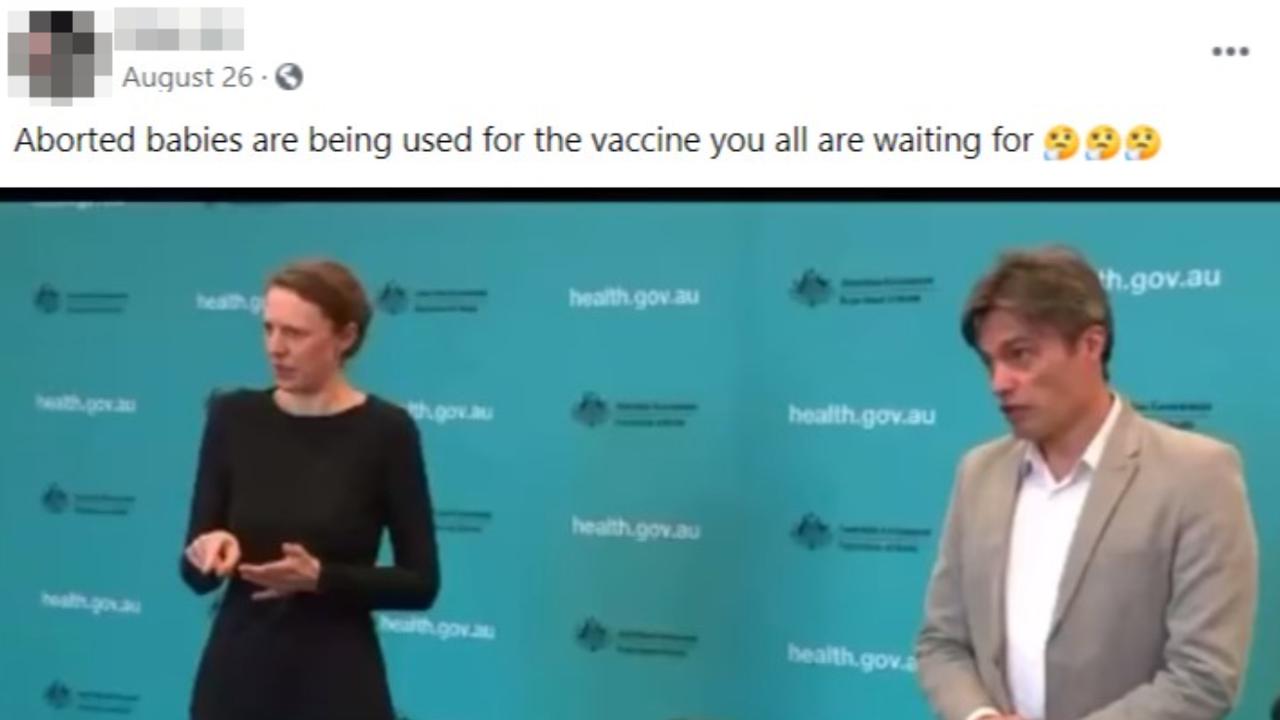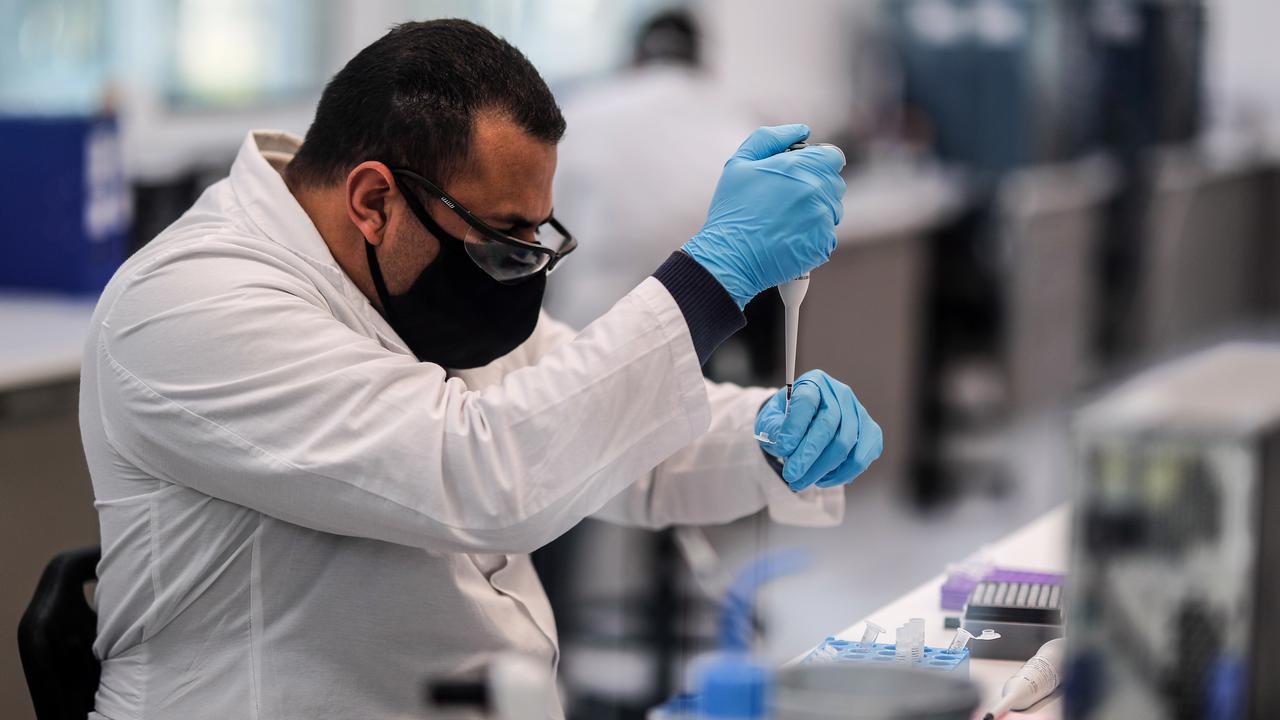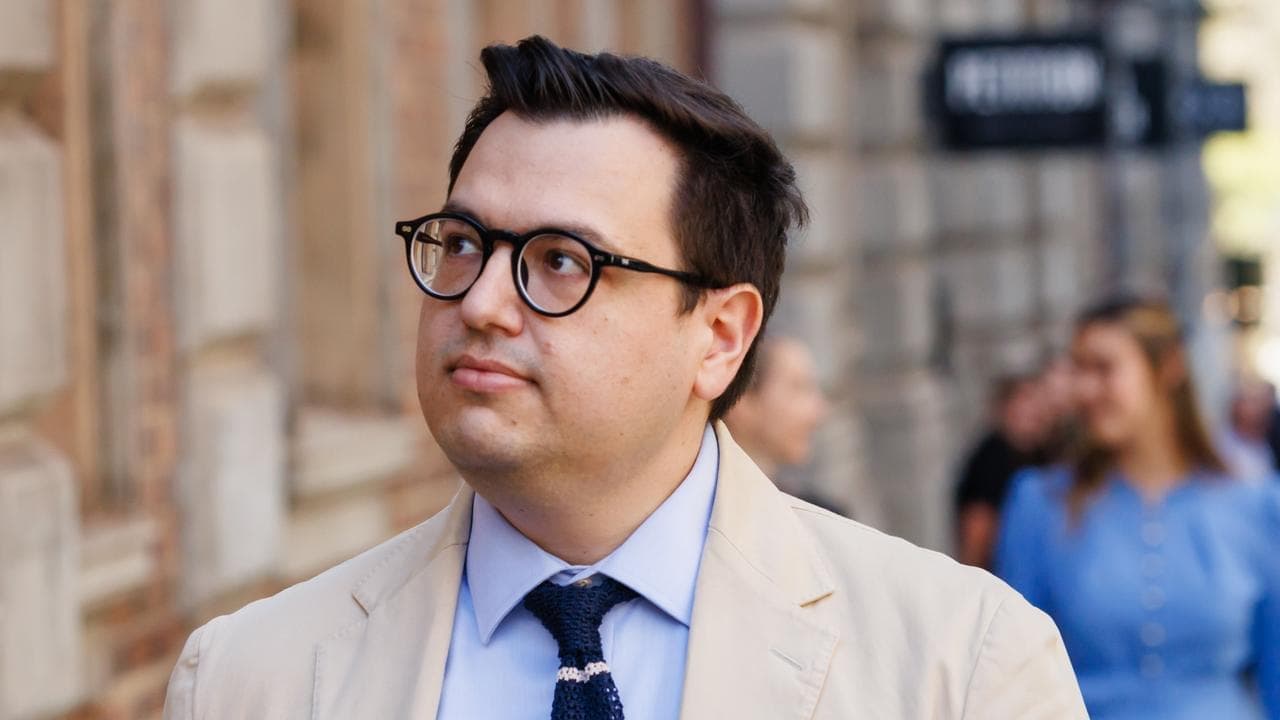The Statement
A Facebook post claims "aborted babies" are being used to develop a COVID-19 vaccine.
The post, from August 26, states: "Aborted babies are being used for the vaccine you all are waiting for." It is accompanied by a video of Australia's deputy chief medical officer, Nick Coatsworth, speaking at a press conference on August 24.
In the video, Dr Coatsworth addresses a question about ethical concerns regarding the use of cells derived from aborted fetuses in developing a leading COVID-19 vaccine.
Dr Coatsworth said he was aware of concerns that "the particular cell line that was produced for the vaccine was from an ethically aborted human fetus", adding that the use of human cells was an important part of developing vaccines.
The Facebook post is from a user who lists their location as Melbourne. At the time of publication, it had been shared more than 6,600 times and attracted more than 970 reactions and 800 comments. The video had been viewed 194,000 times.

The Analysis
The press conference featured in the Facebook post followed Australian religious leaders raising concerns that cells derived from aborted fetuses were being used for a COVID-19 vaccine being developed by Oxford University and pharmaceutical company AstraZeneca, commonly referred to as the "Oxford vaccine".
On August 19, the Australian government announced it had reached an agreement with AstraZeneca to secure access to the Oxford vaccine if trials proved successful.
The following day, Anglican archbishop Glenn Davies, Catholic archbishop of Sydney Anthony Fisher and Greek Orthodox Archdiocese of Australia archbishop Makarios wrote to Prime Minister Scott Morrison raising concerns about the use of cells derived from an aborted fetus in the development of the vaccine.
The letter states the religious leaders are disappointed the government has "thrown its lot in" with a COVID-19 vaccine candidate that involves the HEK-293 cell line, cultivated from an aborted human fetus.
The leaders write that a portion of the population will have an issue with the use of fetal cells and they ask that the vaccine not be made mandatory, while also requesting that an "ethically uncontroversial alternative vaccine be made available".
Dr Coatsworth addressed these concerns during a press conference on August 24, video of which was shared on the Department of Health's social media channels.
In the 74-second snippet of the press conference included in the Facebook post, Dr Coatsworth says human cells were needed to develop vaccines, including the Oxford vaccine, and "we can have every faith" the vaccine has been developed using "the highest of ethical standards internationally".
AAP FactCheck found the video in the Facebook post had not been altered from the original or edited in a misleading way.
So, are "aborted babies" being used to develop COVID-19 vaccines?
University of Auckland vaccinologist and associate professor Helen Petousis-Harris is chair of the World Health Organization's Global Advisory Committee on Vaccine Safety.
Dr Petousis-Harris told AAP FactCheck via email that "aborted babies are not being used for the development of COVID-19 vaccines".
However, she said human cells were required in order to grow the COVID-19 virus when developing certain vaccines as using these was the fastest and most reliable way to study human pathogens.
Dr Petousis-Harris said some cell lines, established decades ago, were derived from cells from electively aborted fetuses and these lines are used in both medical research and the production of some vaccines. These include common vaccines for hepatitis A, rubella, chickenpox and rabies.
She said the cells used to develop vaccines are not the originally harvested cells but distant descendants of those cells. No cells of any kind are part of the final vaccine formulation.
Dr Petousis-Harris said the Oxford vaccines used HEK-293 cells to grow the vaccine and the developers have published details of the manufacturing process that make clear this information.
She said the HEK-293 cells were derived from human embryonic kidney (HEK) cells. The line was developed in scientist Alex van der Eb's Dutch laboratory in about 1973 from cells taken from a single fetus.
Prof van der Eb told a US Food and Drug Agency hearing in 2001 that the kidney cells were likely obtained in 1972 from an electively aborted fetus, and he did not know the reason for the abortion (page 81).
Dr Petousis-Harris said other COVID-19 vaccines were being developed from different human cell lines established in the 1960s, while some COVID-19 vaccines would not require human cell lines at all.
"That said, all vaccines will have benefited during some stage of development from the use of human cell lines because studying the virus and immune responses in the lab inevitably use these cell lines to ensure reliable results that are relevant to humans," she said.
An article co-authored by Professor Megan Munsie, research fellow Dr Chris Gyngell and Associate Professor Michelle Taylor-Sands, all from the University of Melbourne, investigated ethical issues relating to the Oxford vaccine.
The article said the Oxford vaccine was manufactured using the HEK-293 cell line "as 'factories' to make the component of the vaccine that carries genes from the SARS-CoV-2 virus with the aim of triggering an immune response to protect the recipient when injected".
The article said there were six COVID-19 vaccines being developed that used human fetal cell lines. The use of fetal cell lines was "ubiquitous" in medical research, the article added.
It reiterated that the cells used to manufacture the Oxford vaccine were laboratory-cultivated "descendants" of the cells originally obtained in the 1970s from an aborted fetus, and the vaccine itself would contain neither fetal cells nor fetal DNA.
An article in Science Mag has also detailed the use of fetal cells in vaccine development and found at least five COVID-19 vaccine candidates used one of two human fetal cell lines: the HEK-193 cell line, and the PER.C6 cell line developed in 1985.

The Verdict
"Aborted babies" are not being used to develop the Oxford University COVID-19 vaccine, as suggested in the post.
Instead, development of the vaccine will involve laboratory-made descendants of cells derived from a single aborted fetus in the 1970s. The vaccine contains no actual fetal cells or DNA, experts say.
Partly False – Content that has some factual inaccuracies.
* AAP FactCheck is accredited by the Poynter Institute's International Fact-Checking Network, which promotes best practice through a stringent and transparent Code of Principles. https://aap.com.au/











